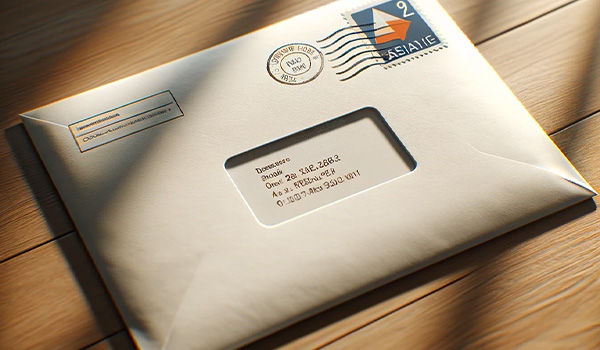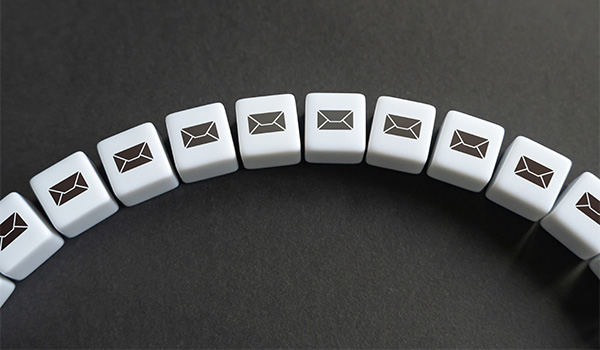Addressed Saturation Mailing vs. Every Door Direct Mail (EDDM)
November 25th, 2023
4 min read

Picture this: You're piecing together your business's next big direct mail campaign, sifting through options, each with its own pros and cons. The decision between addressed saturation mailing and Every Door Direct Mail (EDDM) looms large, a pivotal choice that could shape the success of your outreach efforts.
It's a common crossroads for many businesses, where the right path isn't always clear.
In this maze of choices, Integra Graphics Synergy steps in as your guide. We bring nearly two decades of expertise in the printing industry, seamlessly integrating our knowledge with that of leading list companies and mail houses. Our role is to light the way, helping you navigate these options to find the perfect fit for your campaign whether you’re working with Integra on your direct mail or not.
This article aims to demystify the choice at hand. You'll learn:
- The key features of Addressed Saturation Mailing and EDDM
- How each method impacts cost-effectiveness and targeting precision
- The specific requirements for mail pieces in each strategy
- Insights to help you make an informed decision for your direct mail needs
And just in case neither of these options quite aligns with your goals, we’ll provide links to other strategies and insights so you have alternatives just a click away.
What Is Addressed Saturation Mailing?
Addressed saturation mailing serves those looking to reach a wide, yet specific, audience within a chosen area. Each piece still needs to have a unique address, but it won’t need a specific name for residents and businesses.
Addressed Saturation Mailing Cost Factors
This approach can offer significant postal discounts, especially for larger mailings that fulfill USPS coverage criteria across residential and business addresses.
USPS Specification Requirements
Addressed saturation mailing is flexible regarding mail piece formats. According to USPS guidelines, typical mail pieces should not exceed 11.5 inches in length, 6.125 inches in height and 0.25 inches in thickness, with a maximum weight limit of 3.5 ounces per piece.
In order to qualify for addressed saturation mailing prices, you’ll need to send to 90 percent of residences in the target zone, 75 percent of business or both. Dip below those numbers, and your prices will increase.
Understanding the requirements put forth by the USPS and ensuring your mail pieces meet these specifications can undoubtedly feel like a lot — especially when you have to work with a separate company for your mail lists, printing and mailing. Consider the benefits of working with a print broker who can act as a single point of contact and make sure your direct mail campaign goes off without a hitch.
What Is Every Door Direct Mail (EDDM)?
EDDM is a direct mail strategy that simplifies mailing to local communities by targeting every household along selected postal routes — without needing a mailing list. You won't need a name or address on any piece in an EDDM route.
EDDM Cost Factors
Though EDDM might have a higher postage rate, it reduces expenses associated with list acquisition and individual mail piece addressing. You won't need a name or an address for any of your recipients, but you will need to purchase postage for the entire route. In other words, you can't select partial routes to save money.
USPS Specification Requirements for EDDM
EDDM requires mail pieces to be "flats." They must be at least 11.5 inches in length or 6.125 inches in height but no larger than 15 inches long, 12 inches high and 0.75 inches thick. Their weight should not be more than 3.3 ounces.
The Pros and Cons of Both Mailing Methods
So how do these two strategies stack up against one another? Well, it depends on what you're looking to achieve with your direct mail campaign. Even if one method sounds great for your current goals, you may need to turn to another for a future project.
Some of the most critical drivers in the decision-making process here include:
- Red tape: And by that we mean the USPS requirements you'll need to abide by. If you have a specific type of mail piece in mind, make sure you understand the differences in what's allowed for both addressed saturation and EDDM — or work with someone who does. Saturation mailing has a little less of what you might consider "red tape." As a result, it gains favor in many cases where a design that isn't a flat is decided on before a strategy is chosen.
- Cost efficiency: Addressed saturation mailing typically leads to postage savings as long as you stick to USPS parameters for the program. On the other hand, EDDM offers savings on processing and list acquisition.
- Flexibility in mail types: If you take the addressed saturation route, you'll find that this option accommodates a diverse range of mail sizes and types, in contrast to the specific size and weight limits of EDDM. Both have their own parameters, but EDDM is a little stricter.
- Targeting and engagement: Addressed saturation mailing enables more personalized targeting compared to the broader geographic focus of EDDM. Many recipients respond more favorably when they see their address on the content in their mailbox, which means you might see a higher level of engagement from your recipients.
- Further targeting and impressions: With EDDM, you won't need to purchase mail lists at all. With addressed saturation mailing, you'll require a list of addresses in a specified area, but no names. Neither of these options is ideal for a digital add-on strategy that targets recipients and makes further impressions, so we can't call out a winner. Targeted mailing would be your best bet. However, if you wanted to incorporate SynergyMail or a similar program into one or the other of the direct mail types discussed here, you'd need to add only names with addressed saturation, which makes it a closer fit.
Does Addressed Saturation Mailing or Every Door Direct Mail Make the Most Sense for You?
When you first arrived at this article, you might have felt a mix of frustration and confusion, maybe even a bit of anxiety about the crucial decision ahead of you. Choosing the wrong direct mail strategy can be a costly misstep, risking not only financial resources but also the potential success of your campaign and even your business's reputation. This is a common challenge — one faced by many before they dive into the nuanced world of direct mail marketing.
But now, armed with the knowledge about addressed saturation mailing and EDDM, you stand on firmer ground. You're equipped with the insights to make an informed decision that aligns with your business’s goals, budget and audience. This newfound understanding should empower you to craft a direct mail campaign that not only reaches your audience but resonates with them, setting the stage for a successful marketing endeavor.
As you look to the future and plan your direct mail strategy, remember that there are other avenues to explore. If neither addressed saturation mailing nor EDDM feels like the perfect match, targeted mailing might be your ideal solution. You can learn more about this strategy in our comprehensive comparison articles, designed to guide you through every aspect of direct mail marketing:
- Addressed Saturation vs. Targeted Mailing: Which Is Right for You?
- Every Door Direct Mail (EDDM) vs Targeted Mailing — Which Is Right for You?
Once you have a clearer picture of the kind of direct mail campaign that suits your needs, you may feel ready for your next steps. If you have an idea in mind and need someone to help with designing, acquiring the right lists, printing and then mailing your work, we would love to help.
Get in touch with us today, and together, we’ll make your direct mail project a resounding success.
Topics:


























